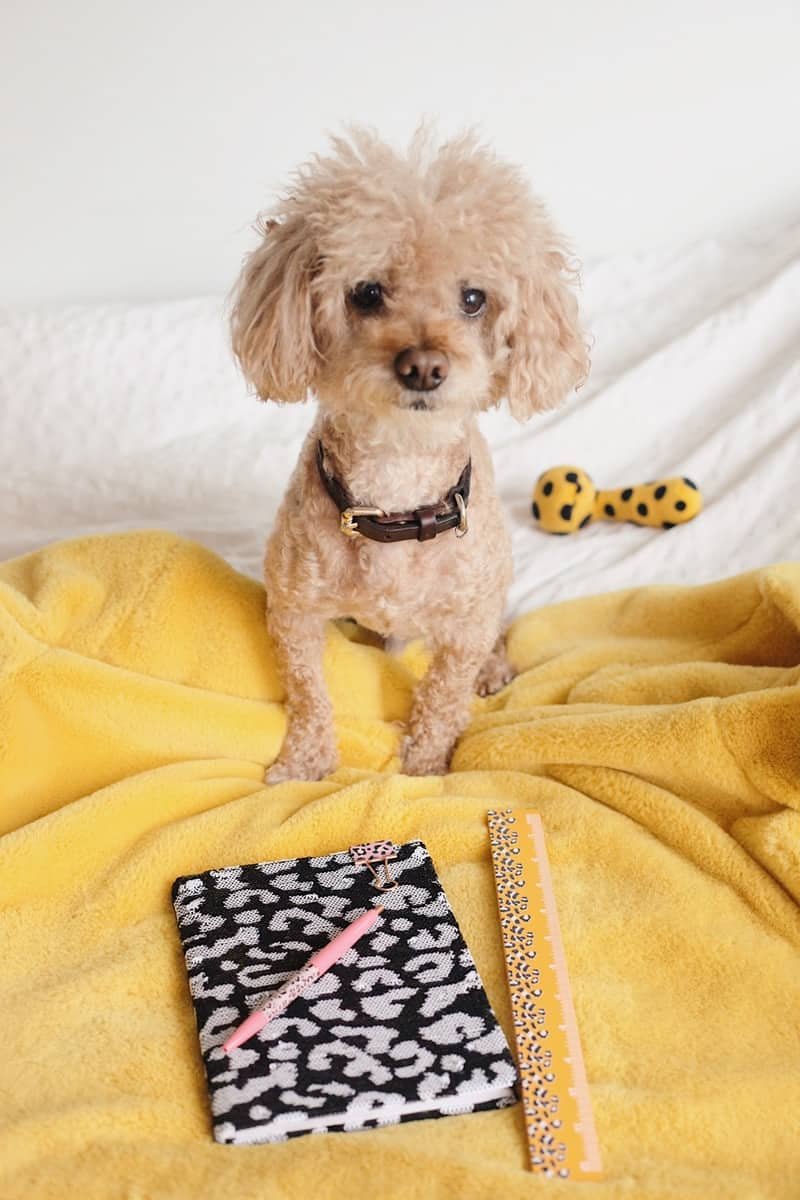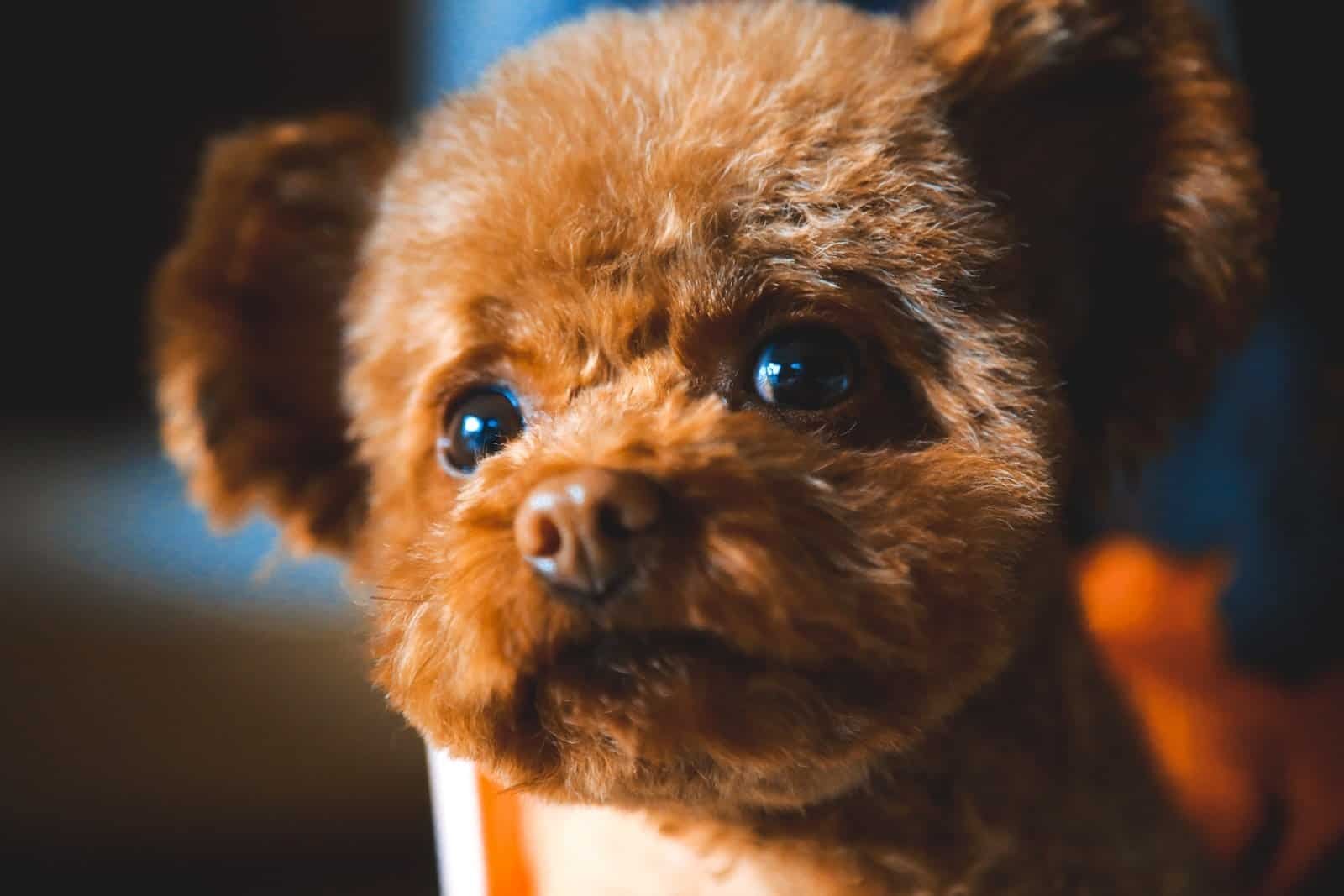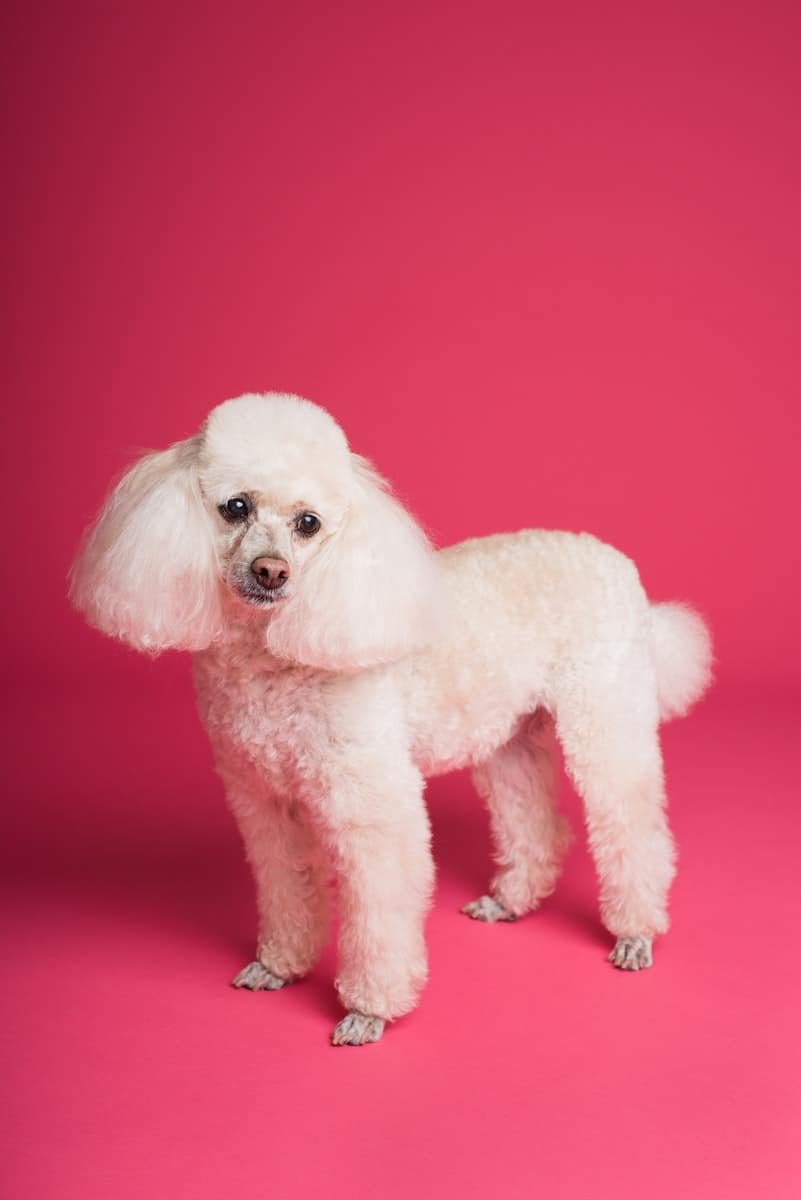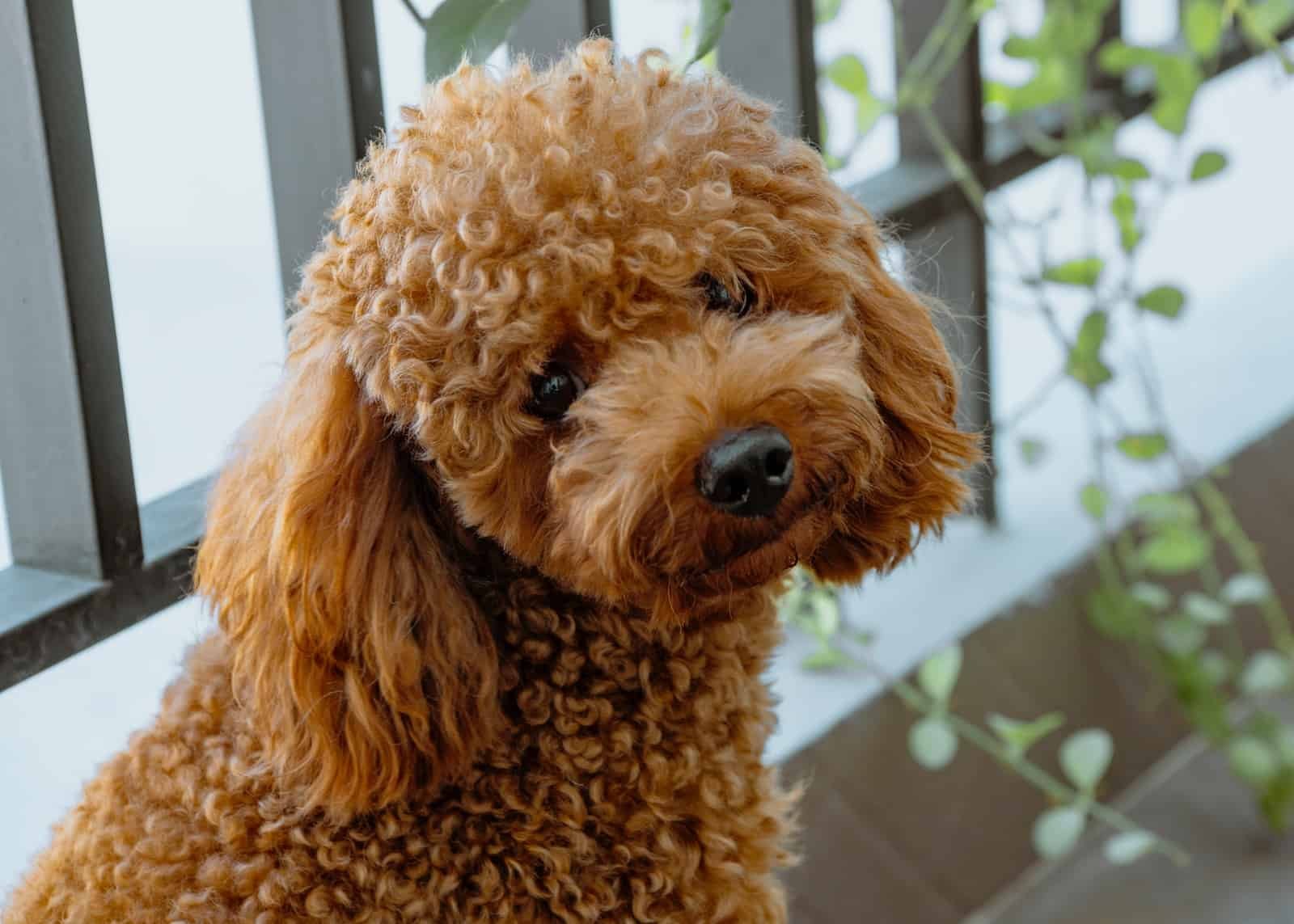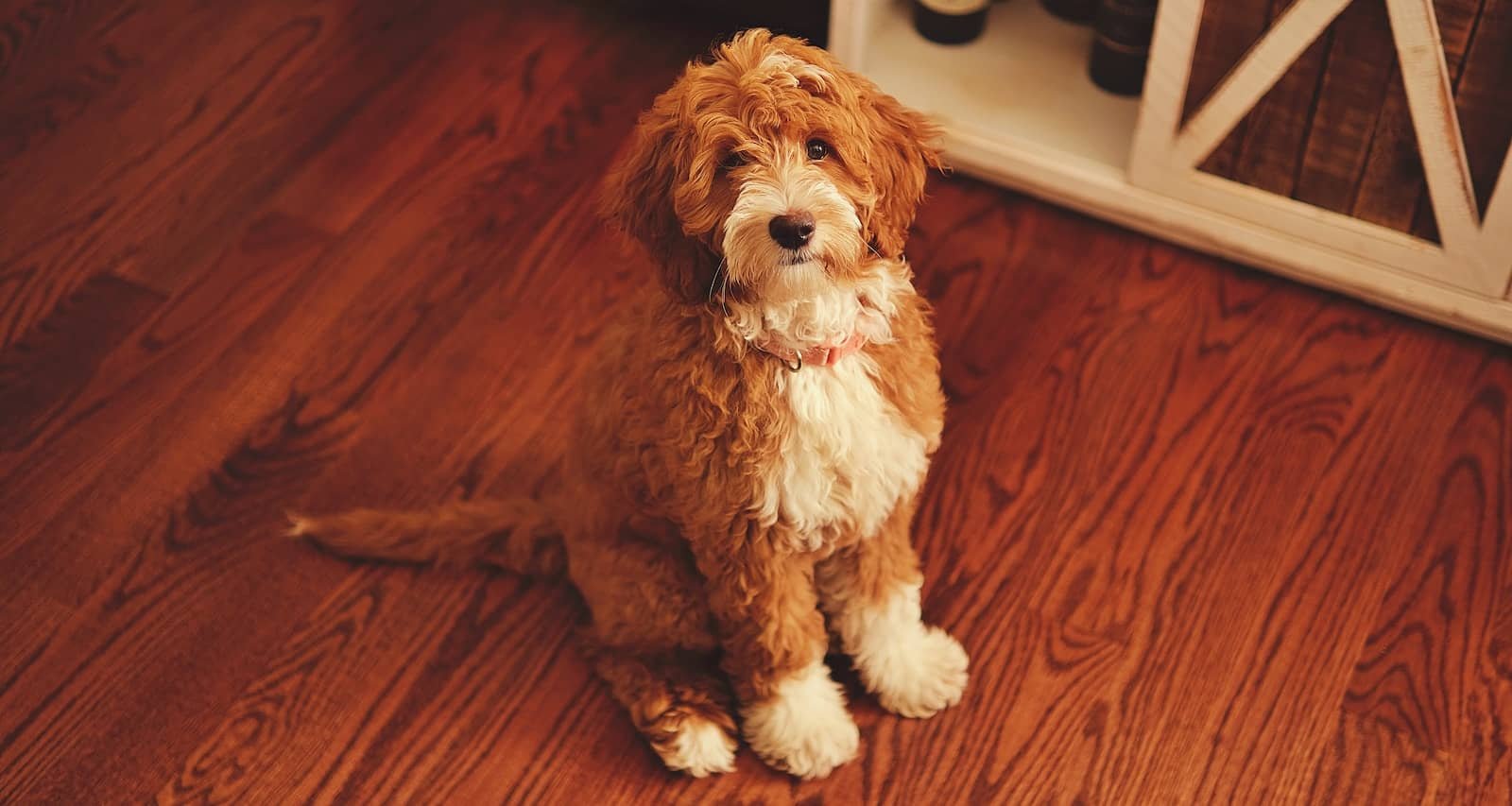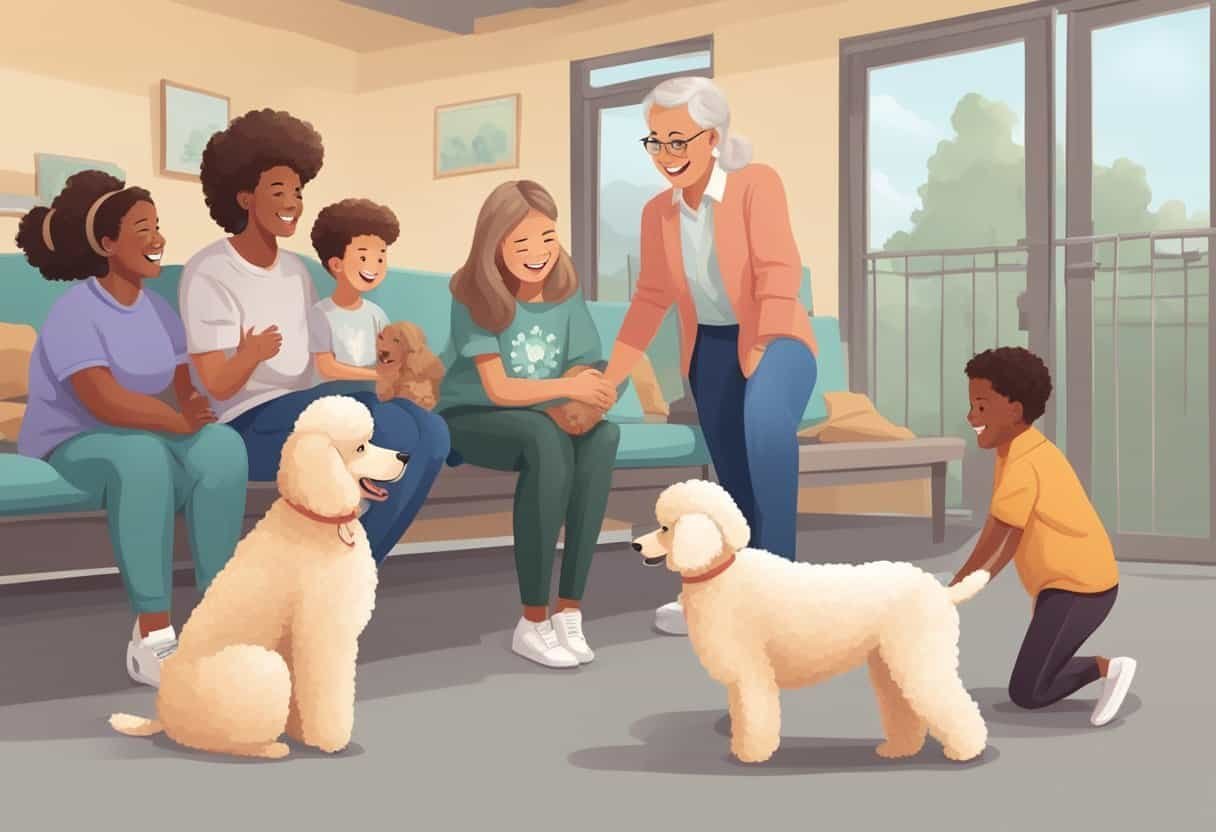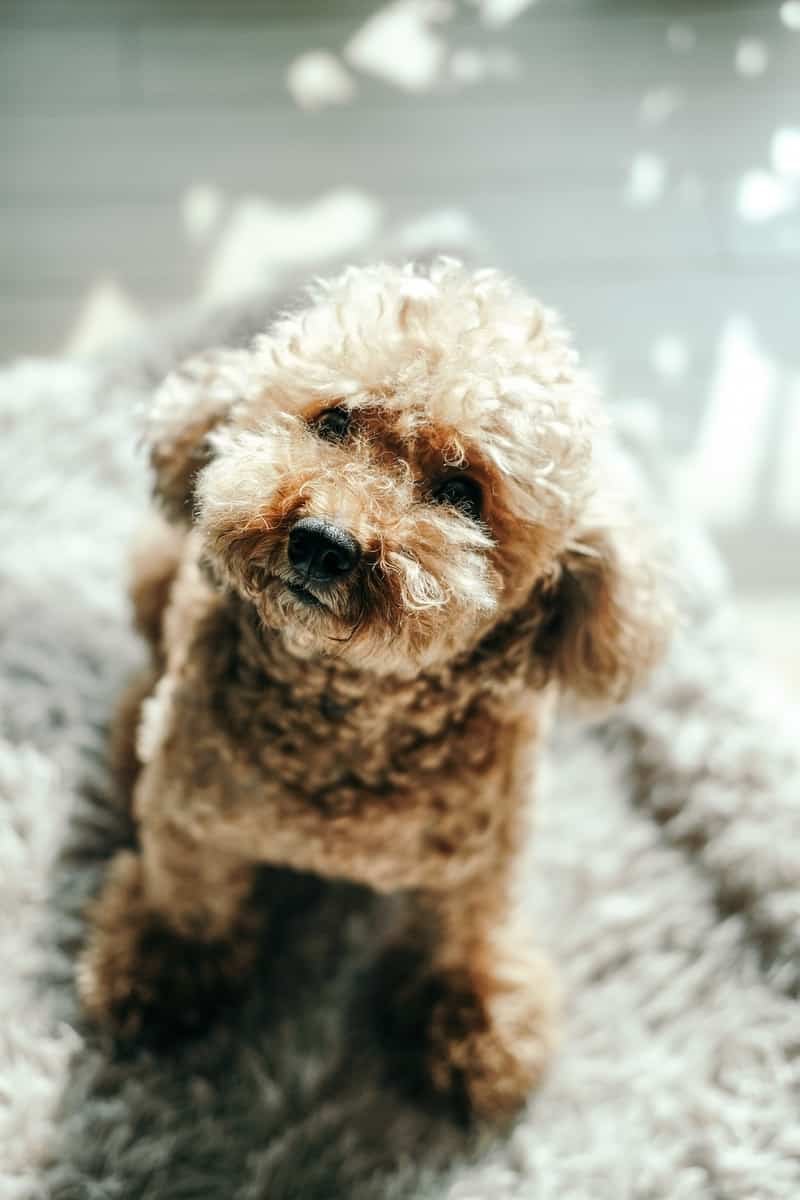
The Standard Poodle is an iconic dog that’s the epitome of class.
But what many people may not know is that there is more to this pooch than its adorable curly coat. These canines are popular for several reasons – and their good looks are just one of them.
The Poodle breed is the second smartest and most trainable dog – just right behind the athletic Border Collie. Regardless of the type of Poodle – Standard, Toy, or Miniature – they are all just as intelligent and obedient but with some variations in temperament (more on that in a bit).
Standard Poodles excel in many dog sports, shows, and activities. Whether it is obedience training, agility, circus performance, and herding, they do these all in flying colors.
Were you thinking of owning this intelligent breed soon? Or perhaps you already have one and have been wanting to mold him into the best version of himself.
Let’s know more about their interesting features, temperament and behavior, and how to care for this brainy pup.
1. What does “standard poodle” mean?
A: Standard, meaning average size poodle. The name was originally used as an example in breeding programs.
2. Why did people start breeding these poodles?
A: In Germany, the Poodle was a very popular breed. Brought to England as pets, the name “Pudel” stuck since it was a German for “little dog.”
3. Is the American Kennel Club responsible for naming all breeds of dogs?
A: No! There are over 200 different organizations around the world that work together to create standards for each breed. They also help keep track of which dogs belong to which organization so we don’t end up with two separate groups calling themselves the same thing.
4. How old were the first recorded Poodles?
A: Around 400 BC, ancient Egyptians kept records of having owned several small dogs, including the modern-day Poodle.
5. Do Poodles shed?
A: Not really. Their coats grow out naturally every year, shedding only when they go through a growth spurt.
6. Are there any differences between AKC and CKC standards?
A: The two organizations do not compete for members or clients; they work together to promote responsible ownership of dogs.
Standard Poodle Breed Information – History & Origin
Where do Standard Poodles originate from?
Contrary to popular belief, Poodles are not historically from France. Yes, these curly-coated canines are often associated with France, but they did not originate from this part of the world.
Experts believe they originated in either Russia or Central Europe, as well as Portugal or Spain.
There were also proponents of the dog’s ancestry in Ancient Egypt and Rome. Historians have discovered statues and sketches of elegant show dogs that resembled modern-day Poodles in Roman and Egyptian tombs and artifacts as old as the first centuries B.C!
While no one is certain about the accurate beginnings of this breed, one thing is for sure: They are bred to hunt birds and retrieve game in the water.
No wonder their name means “to splash about” in the old German language!
These canines are excellent swimmers. Thus, to make them even more efficient in the water for retrieving games, hunters clipped their hair. They shaved nearly everything except for the hair around the vital organs and joints.
Now with less drag, these water-loving pups can swim faster without freezing.
But that’s not the only “customization” humans did to this dog breed. By the 1700s, Poodles of different sizes started increasing the world. These pups were bred down to varied sizes, which we now know as the Standard Poodle, Toy Poodle, and Miniature Poodle.
Interestingly, many historians believe that smaller Poodles (e.g., Toy and Miniature) have been around since the 1400s. These smaller versions of the breed were created to entertain the Parisian bourgeois.
Their sizes also determine their job or purpose. For instance, these Poodle breeds were canine companions of French hunters for duck hunting while smaller Poodles sniffed out and searched for truffles in the thick woods.
And as for the tiny Toy Poodle? Their main job was to delight the wealthy and members of the nobility in France. During the Renaissance era, affluent Parisians would tote their Toy Poodles around in their shirtsleeves, thus earning the moniker “sleeve dogs.”
They may come in smaller or bigger packages but still possess the similar breed standard and enigma that has won the hearts of many canine lovers worldwide!
Distinctive Physical Traits and Features of the Standard Poodle
Standard Poodles, as the name implies, is the “original” Poodle.
They are the tallest of the other types of Poodle, standing at 15 inches from the shoulder. These dogs have moderately rounded heads and flat cheekbones.
However, they are not your leggy pups. They have broad and short loins yet are muscular. They have small and oval-shaped feet, which are parallel and straight.
While these canines have a double coat, their hair tends to kink and curl towards its body. A Poodles’ hair also keeps growing unless cut or clipped; one reason why it is necessary to groom your Standard Poodle regularly. Consistent grooming will help prevent skin infections or matting from neglected coat length.
As we’ve mentioned earlier, Standard Poodles usually sport the complex Continental Clip at dog shows. However, there is also the less elaborate Sporting Clip. In this hairstyle, the short coat follows the Poodle’s smoothly muscled and square-built physique.
A Standard Poodle’s coat may either be corded or curly.
In the case of a curly coat, it is quite abundant and harsh to the touch. On the other hand, corded coats are tighter and longer on the body and the head, yet shorter around the ankles.
Are Standard Poodles high-maintenance dogs?
At first glance, it is typical to think of these dogs as difficult to manage. After all, they always look perfect with their iconic show-ring clips.
But you can go past the elaborate clips and realize that these dogs can don a normal hairstyle, too!
Many Poodle owners tend to keep their dogs’ looks quite low-key by keeping their hair short. Thus, brushing and grooming should be a breeze.
Furthermore, if you cannot resist owning a Poodle, yet you shun heavy-shedder pooches, this dog breed is a great match for you. Despite their double coats, Poodles are light shedders. They give you a break from having to clean up a thick ball of fluff all over the house!
Poodles exude an air of elegance combined with those oval-shaped dark eyes, flat yet defined cheekbones, rounded skulls, and a smoothly muscled body. They also have a graceful gait that complements their aesthetically pleasing appearance.
Unfortunately, Poodles have been stereotyped as sissy dogs because of their conventional hairstyle, which is misinterpreted due to their athleticism and intelligence.
Their athleticism, smarts, sturdy bodies, well-trained Poodles bag prizes, and recognitions at dog shows and contests.
They carry themselves proudly and trot with confidence – true to their impressive origins as expert hunters, retrievers, and a human’s loyal four-legged best friend.
Are Standard Poodles Aggressive? Poodle Temperament, Behavior and Training
Now, let’s talk about temperament. Are these Poodles difficult dogs?
Not at all, once you train them.
Fortunately, these pets won’t make obedience training a nightmare for you. They have very high intelligence, but they can be stubborn at times. Poodles love to please their owners and will do anything for them. The standard poodles were bred as hunting companions in England during the 19th century. Their ancestors include the German Spitz, which hunters flush out game from thickets or brushy areas. Standard poodles are known for being extremely loyal to their families and friends.
They have a good head over their shoulders – both literally and figuratively. Brainy dogs pay close attention to their owners, thus enabling them to learn pretty quickly.
You only need positive reinforcement to train these dogs well. Leave the harsh treatment out the door because these canines will not benefit from it.
If you see the following, praise them and always catch them doing good.:
– They are sitting quietly in their bed or crate.
– They have been quiet all day.
– They did not bark at visitors today.
– They were calm when they woke up this morning.
– They went to sleep without any problems last night.
– They ate everything on their plate yesterday evening.
– They played with toys calmly yesterday afternoon.
– They listened patiently while I was talking to someone else yesterday
One secret to a well-trained, loving, and obedient Standard Poodle is to treat your pup with respect, and you can expect him to become the loyal, affectionate, and friendly pup he is bred to be.
But there is one caveat to this dog breed: They need plenty of mental stimulation.
These are not the kind of dogs that would be content just sitting around in the yard and doing nothing. They get bored easily when ignored too often, which can result in destructive behaviors.
As intelligent dogs, Poodles crave mental stimulation more than any other breed. Fill their days with challenging games and tasks, including fetching, playing hide and seek, and providing great mentally stimulating activities.
Because of their inherent intelligence and protective nature, Standard Poodles excel as watchdogs. So, are Standard Poodles aggressive? No, not usually, yet; this breed can become overly watchful and cautious towards strangers. Early socialization is vital to prevent your puppy from being too timid or skeptical of people outside their family circle.
To ensure a happy, confident, and gentle-mannered Standard Poodle, it is essential to socialize and train him early.
Take your pup outside as early as eight weeks old once all vaccinations have been completed. Allow your dog to experience a barrage of sounds, smells, and sights. You should also give him time to interact with guests in the house, which will help your pet become more comfortable around strangers.
Do you have dogs, cats, and young children in the house?
Probably not, since they are generally pleasant and peaceful creatures. They can also work well with children, so long as they can handle this pooch gently.
However, younger Poodles may be too active for a small child. These dogs tend to be quite bouncy and energetic, which could be intimidating for toddlers. Keep your child supervised when in the same room with a rather agile Poodle puppy.
Another thing to note about these Poodles is their guarding instincts. They may be too sensitive to sudden and abrupt noises, as well as unpredictable movements. Poodles are not rough-housing playmates because of their natural calm and peaceful nature.
Feeding and Grooming Your Standard Poodle
Poodles are good at staying at a reasonable weight.
With a balanced diet, these canines can remain healthy and thriving for a long time. However, it is best to keep their diet in check when they gain excessive weight.
Feed your pup with the best quality dog food suitable for their age, size, and activity level. The amount of food also depends on the brand, so it is best to read labels to know more about the quantity and frequency of feeding time.
But one thing is certain – Poodle puppies need more frequent feeding than adult Poodles. If they are less than six months of age, be sure to feed them 4 to 5 meals per day. Then, you can introduce 2 to 3 large meals daily as they get older.
Some human foods can be healthy and safe for dogs, but many can do more harm than good. So, it is best to choose proven and recommended foods to be safe for your pet.
The following Human food list should not be fed to a dog:
* Raw meat
* Raw poultry or fish
* Uncooked eggs
* Undercooked meats
* Dairy products: e.g., milk, cheese, ice cream, yogurt, etc.
* Nuts/seeds
* Chocolate
* Garlic
* Onions
* Peanuts
* Avocados
* Apples
It would help if you kept treats to a minimum. While these are good for training your pup, you should never get them into the habit of munching on treats too often. Otherwise, your pet is likely to suffer from obesity and other ailments linked with it.
Poodles live between 12 and 15 years. Yet, some genetic diseases common among Poodle breeds include adrenal glands issues (also known as Addison’s disease), bloating, skin disease, and Autoimmune disease. Make it a point to schedule veterinary appointments to ensure your pet’s general health and wellness.
Next, let’s talk about grooming your pup. How often should you bathe Poodles?
Grooming a Poodle can be a bit of a challenge, especially for first-time owners. These dogs require grooming every 3 to 6 weeks to keep their dense and thick coat under control.
Standard Poodles’ coats come in a variety of colors such as apricot, cream, black, blue, white, brown, or silver. They may also be dense, wiry, and curly, which allows for a diverse hairstyle. You can groom, shave, clip, trim, or even shape it into different styles. That’s the fun part about it!
Although it can be fun to experiment with your dog’s hair, regular grooming can be time-consuming and expensive in the long run.
One way to get around the expenses of frequent grooming is by simply shaving the coat off.
Clip your Poodle’s hair short to minimize the work and time needed to groom it, also helping to keep the coat tangle-free and clean.
Bottom Line
There you have it – the fascinating traits and quirks of the Standard Poodle Dogs.
It is hard not to fall for this intelligent dog breed with its dense, curly coat, weepy oval eyes, and floppy ears. Its ancestry goes back several thousand years.
The standard poodles are known for their intelligence, loyalty, affectionate nature, and gentle temperament. They make wonderful family pets as well as companions for older people or those who live alone. The life expectancy of a standard poodle can be up to 15-20 years old.
Shower your Poodle with love and positive reinforcement for a fun and loyal companion.

